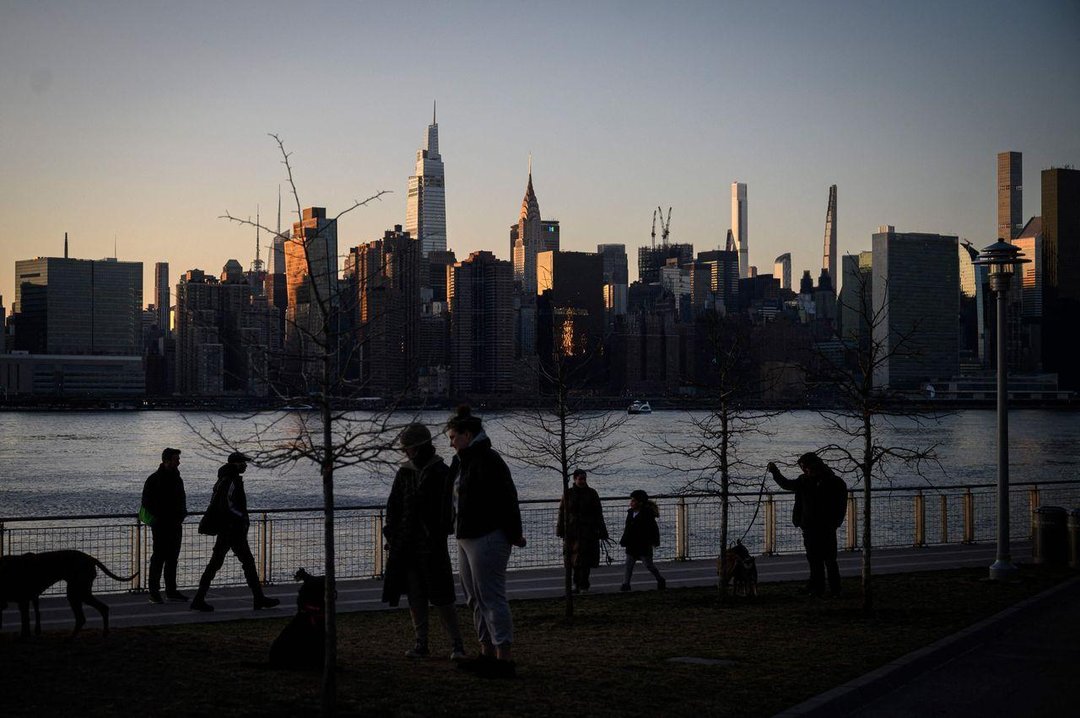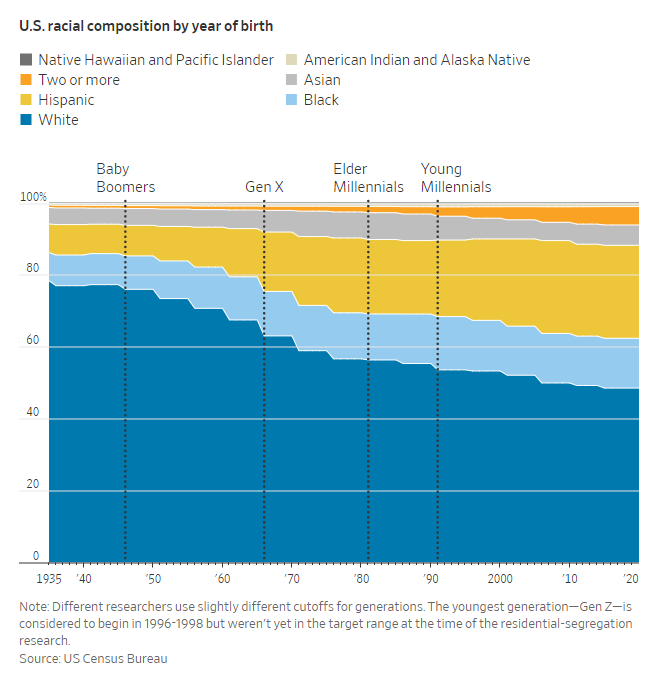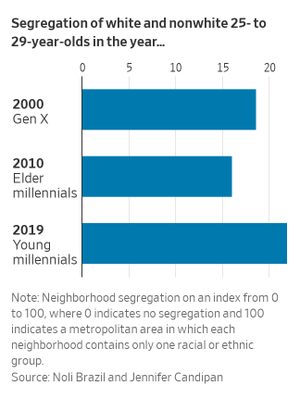
By Josh Zumbrun
May 19, 2023
The racial and ethnic diversity of millennials has been widely remarked upon since the term was coined to describe people born in the 1980s and 1990s. William Frey, a demographer at the Brookings Institution, dubbed millennials “a demographic bridge to America’s diverse future.”

Residential segregation among young people increased, rather than decreased, from 2010 to 2019, according to new research. PHOTO: ED JONES/AGENCE FRANCE-PRESSE/GETTY IMAGES
Yet in one important respect, millennials born in the early 1990s are at odds with this description. As adults, they have settled into more segregated neighborhoods than preceding generations.
Residential segregation among young people increased, rather than decreased, from 2010 to 2019, according to the new findings from Noli Brazil at the University of California, Davis, and Jennifer Candipan at Brown University.
“There’s all this talk about millennials being very much integrated [and] socially progressive,” said Brazil. “But there hasn’t been much focus in scholarly research, in terms of the idea of where they live and residential segregation patterns.”
Brazil presented his data at the Population Association of America conference in April and, with Candipan, in a working paper this week.

Generations have no official definition. The more precise term for what we’re studying is birth cohorts—people who all share the same year or period of birth.
Frey’s research defined millennials as the cohort born from 1981 to 1997. Pew Research Center has used 1981 to 1996. Merriam-Webster says anyone born in the 1980s or 1990s.
By any age cutoff, though, millennials are more racially diverse than the population at large. Based on census data for people born from 1981 to 1995, millennials are about 55% white, compared with 63% for Generation X and 71% for baby boomers. Millennials are about 21% Hispanic, compared with 16% in Generation X and 11% for baby boomers. The Asian and Black populations are also slightly larger for millennials. Young millennials are slightly more diverse than older millennials.
Brazil and Candipan focus on 25- to 29-year-olds in 1990, 2000, 2010 and 2019. Those are people born in the early 1960s (boomers), early 1970s (Gen Xers), early 1980s (the authors call them “early millennials,” although this is my generation and I prefer the term elder millennials) and, finally, early 1990s (the young millennials).
The racial diversity of millennials appears to be reflected in the generation’s political views.
For example, a majority of millennials (53%) say that interracial marriage is a good thing, compared with 30% of baby boomers. Only 4% say it’s a bad thing, compared with 10% of boomers. (The remainder of both groups say it doesn’t make a difference.) For millennials, 61% say increasing racial diversity is good for the country, compared with 52% of Gen Xers and 48% of boomers.
So one might assume that this generation would also be more integrated residentially, as the early millennials were at the time of the 2010 Census. This is the hypothesis Brazil and Candipan set out to test. Brazil said he recognized millennials were diverse by many measures, but also knew “residential segregation has been such a longstanding durable phenomenon.”

It’s tricky to measure how segregated a city or neighborhood is. One popular metric is an entropy index, scaled so that 0 indicates no segregation and 100 indicates maximum segregation—a metropolitan area in which each neighborhood contains only one racial or ethnic group. Brazil and Candipan parse the data for 51,937 neighborhoods (or census tracts) in 222 metropolitan areas.
In 2000, the average segregation index of the neighborhoods inhabited by 25- to 29-year-olds was 19. By 2010, the average index of people of that age (older millennials) had dropped to 16. By 2019, the average index of people of that age (young millennials) had risen to 22.
Another segregation metric is the variance ratio index, which Candipan interprets as follows: In the year 2000, the average young white adult (a Gen Xer) lived in a neighborhood that was 21 percentage points more white than we would expect if young white and nonwhite adults were distributed evenly across all neighborhoods.
That gap narrowed to about 18.5 percentage points in 2010 but by 2019 had widened to 24 percentage points.
These indexes tell the same story: Young millennials are living in significantly more segregated neighborhoods than elder millennials and Gen Xers did at the same age.
So what could be going on? Perhaps when it comes time to picking a neighborhood, some people still don’t embrace diversity as much as they profess in surveys.
It could also be that many white Gen Xers and the now-elder millennials moved into affordable, racially diverse neighborhoods in central cities. By the time young millennials moved in, those same neighborhoods were less affordable and less diverse. In the most expensive cities, young adults might have relatively little choice in where they can afford to live.
It remains to be seen what the trends look like in the postpandemic era, or as millennials age further.
Frey, the Brookings demographer, noted the generation is still settling down, and so the findings might be tentative. But, he added, segregation is “probably the most sticky of all racial disparities.”
Write to Josh Zumbrun at josh.zumbrun@wsj.com
Dow Jones & Company, Inc.



